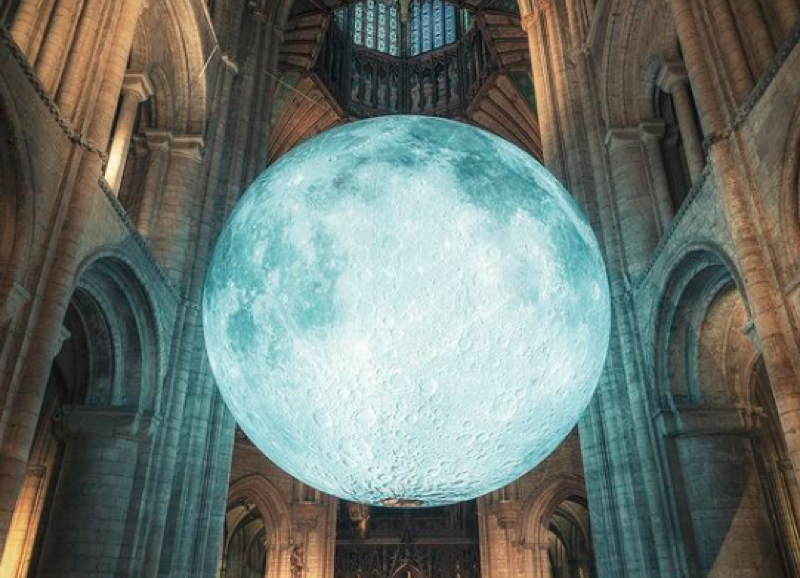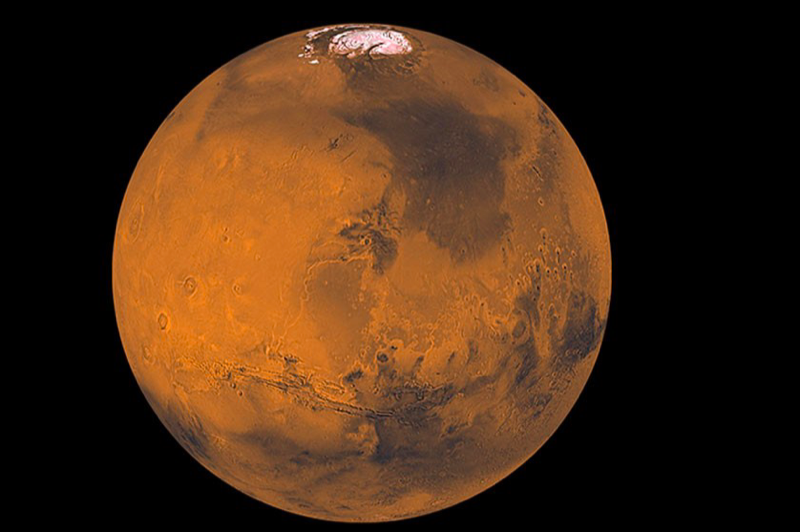London Natural History Museum Installs Giant Replica Of Mars

To mark the recent arrival of NASA’s Perseverance rover on Mars, the Natural History Museum has installed a giant replica of the red planet.
The Natural History Museum in London already had a giant replica of Earth and the Moon. Now, to mark the recent arrival of NASA’s Perseverance rover on the red planet, they have added a giant replica of Mars. The replica can be seen suspended from the ceiling in the Hintze Hall at the museum and was created by UK artist Luke Jerram.
Giant Replica Of Mars At The Natural History Museum
Recently, there was much ceremony and excitement in the news over the arrival of NASA’s Perseverance rover on Mars, following its seven-month journey from Earth. Now, a new replica of Mars at the Natural History Museum in London hangs from the ceiling to be gazed at by us mere mortals on Earth. The replica features artwork from former NASA missions.
Meanwhile, Perseverance will be searching for traces of past microbial life on Mars. The rover will select scientifically interesting rock and soil samples in order to reconstruct the surface environment of Mars billions of years ago, at a time when experts believe life could have existed on the red planet.

Professor Caroline Smith and Dr. Keyron Hickman-Lewis, scientists from the Natural History Museum, are working with NASA and the European Space Agency to give advice on rock and sample collection on the distant red planet. The scientists form part of the NASA Mars 2020 Science Team and will help with making decisions on sampling and analysis throughout the course of Perseverance’s mission.
Where Will Perseverance Land?
Perseverance is the largest and most advanced vehicle ever sent by NASA to land on another planet. The new Mars rover is set to land at Jezero crater, a 28-mile-wide depression, containing the diverse sediments of an ancient river delta. The crater presents the most opportune environment in which the presence of past life could have been preserved.
The rover will drill 7 cm into the rocks on the planet’s surface. Perseverance will then seal samples in special tubes. Once the rover reaches a suitable location, the tubes will be stored on the surface of Mars, ready for collection by a future retrieval mission. NASA is already planning that mission for the early 2030s.
Professor Smith said in a statement that the Perseverance rover was specifically designed to search for evidence of ancient life on Mars. She said the rover’s ability to “collect interesting samples for potential return to Earth” gives scientists the best chance so far of finally answering the big question of “Was there life on Mars?” Professor Smith said this would be “one of the most significant scientific discoveries in history.”
While the Mars installation is incredible to view, regrettably the London Natural History Museum remains closed due to current COVID-19 restrictions. However, with the vaccine program currently running in the UK and the gradual lifting of lockdown conditions, hopefully, visitors will be able to head to the museum to see the replica of Mars, as well as the giant replica of our own planet Earth, and the Moon.

